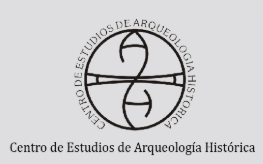El colegio convictorio Nuestra Señora de Montserrat:
Arqueología y documentos históricos para su interpretación
DOI:
https://doi.org/10.35305/tpahl.vi5.68Keywords:
Jesuits., Paraquaria, convictorium, MontserratAbstract
The original spaces of the Convictorium College of Our Lady of Montserrat – today San Alberto Museum – are the least recognized buildings because of its Jesuit identity in Cordoba. Towards the end of the ´70, from the History and Heritage Institute – UCC, a project was developed to rescue two cloisters of the building, with an interdisciplinary team coordinated by Marina Waisman. She convened Lic Marta Slavazza, an uncommon event at the time, when the historical archeology was still emerging. Her detailed report had a low impact in the work. The Institute only conserves the written work, without graphic, and the partial publication of 1999 neither provides this. The work of Slavazza and the stone objects found later are being brought to light of new historical documentation. This new contrasts allow to: move forward in the historical architecture investigations, better understanding of the architecture and the building functions in the Jesuit period , and propose substantiated interventions that contribute to its interpretation.







